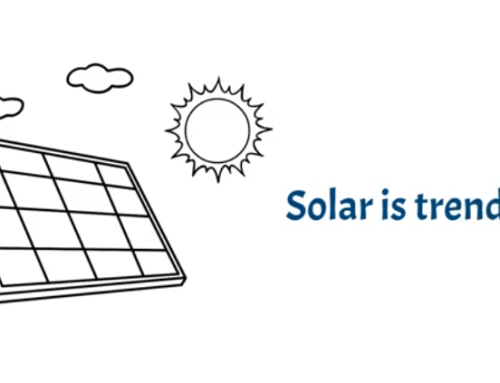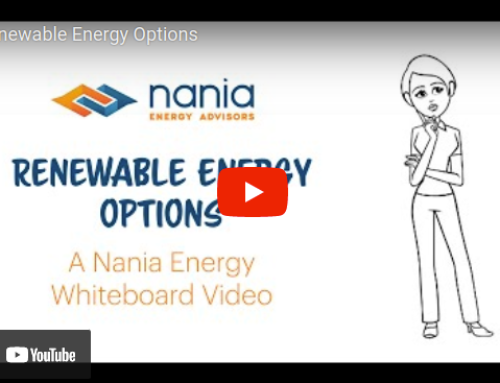Video Transcript
Hey guys! It’s Becky with Nania Energy, back with the second video in our series “Energy ABC’s.”
Today we’re going to cover a heavy topic of the different ways to purchase energy.
There’s a lot of different options available to you: there’s consortiums, using a broker or consultant, or going direct through a supplier. We’ll cover the pros and cons of each so that you can figure out which is best for your district.
Option 1: Consortiums
Alright, so let’s start with consortiums — or, buying groups or co-ops.
These are typically large groups of similarly-structured businesses, like a K-12 school, that band together to purchase energy in bulk.
A lot of these were created over a decade ago when electricity was first deregulated in Illinois and there was a lot of volatility in the market. So they banded together for safety in numbers.
Consortium — Pros
Think of it like a glacier — it’s large and slow moving, but doesn’t veer much off course. That’s the way that consortiums typically purchase energy, which is great for you as a school district because it’s little to no maintenance.
Consortiums are typically governed by an appointed board, and they oversee a third party — such as a consultant or a supplier — that makes a purchasing decision on your behalf. So it’s kind of a set it and forget it option for your school district. This is really great for you if you’re a smaller school and energy isn’t a large portion of your budget, and you just don’t have the time to dedicate to it.
Consortium — Cons
Some of the disadvantages that come with this, however, is that they’re not a low-cost provider. They don’t set out to be. They’re trying to flat-line the price and eliminate any of the big highs and lows that may exist.
So any opportunities that pop up like we saw in summer 2019 — when we had the lowest prices in the last decade — you’re not able to take advantage of, and you’re limited in the flexibility that you have to look outside of the buying group itself.
A lot of times, to even exit the group once you’re a member could take 3 or 4 years. So you have to be pretty committed to the process if you’re going to join.
Option 2: Advisor, Broker, or Consultant
The second option you have to purchase energy is to use an ABC — an Advisor, Broker, or Consultant.
While there’s differences between those three, one similarity is that they’re all a third-party that acts as a middleman between your district and your supplier.
ABC — Pros
They often have several supplier relationships, so when they run an RFP for you they’re able to bring a large level of competition — which translates into a lower rate for your school.
They also can offer a range of services to help make your life easier and save you time and energy. This includes:
- Bill auditing services
- Handling customer service issues you have with the utility
- Helping you forecast your forward fiscal budget
- Validating any ROIs you have on efficiency projects.
ABC — Cons
Some disadvantages to using an ABC, however, is that there is an additional cost. You do pay them a fee, and you should know what that fee is to know that it’s fair and reasonable for your district.
Each ABC handles this a little bit differently. Some require an up-front consulting fee, some bill you directly monthly, and others will actually bake their fee into your fixed rate on your supplier bill.
Make sure you have the conversation ahead of time and know what this is. If your current ABC isn’t willing to share this information with you, it’s generally a red flag that something’s probably not right.
Another drawback of using an ABC is that there are unfortunately low barriers to entry in our state. There’s literally hundreds of brokers in the state of Illinois.
Make sure that you do your due diligence and ask them for references of other K-12’s they’re working with. Check up on them and make sure that they have a full understanding of how your school business operates. It’ll be most important to your bottom line.
Option 3: Directly through a supplier
A third option you have is to work directly through a supplier. These are the people you receive your invoice from each month.
Direct through Supplier — Pros
By working directly through a supplier, there’s no third-party administration cost like there is with using a consortium or a broker.
They also may be able to offer you some completely customized products that you’re not able to get by running a standardized RFP.
Direct through Supplier — Cons
However, this option is really best for districts that have the time and energy that it takes to understand the energy world and make sure they’re not putting their school at risk.
There’s a lot of moving pieces to energy, and having a partner to help guide you through that process is imperative to ensure you’re making the best decision for you and your school business.
I hope you enjoyed this video and found it helpful in determining which method you’ll use going forward. If you have any questions, drop us a line or shoot us a note — we’d be happy to help.
Otherwise, we’ll see you next time on Energy ABC’s!
Follow us on LinkedIn!









Leave A Comment